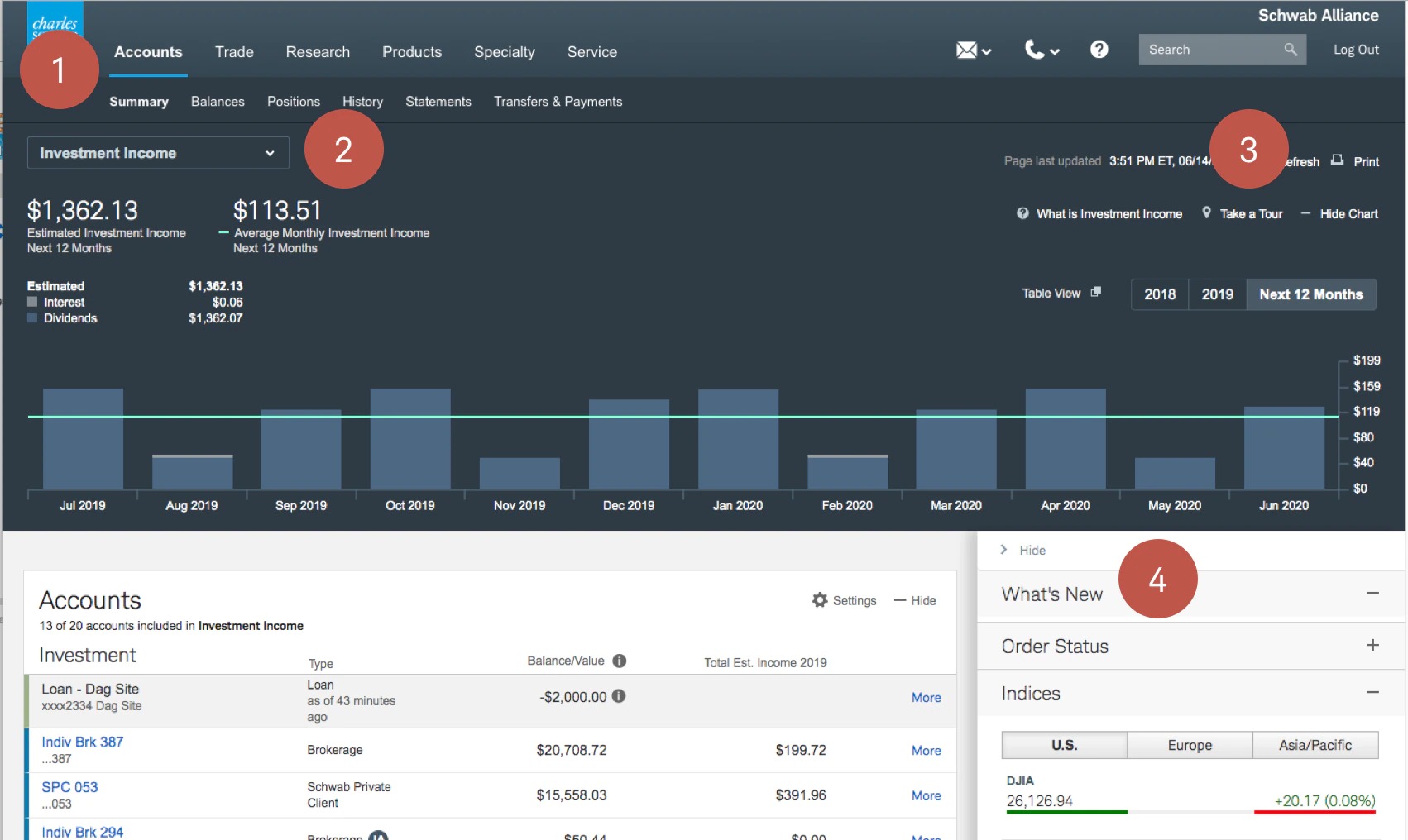

Finance
Why Is Using Debt In Capital Structure Good
Published: December 24, 2023
Explore the benefits of incorporating debt into your capital structure and discover how it can positively impact your finance strategy.
(Many of the links in this article redirect to a specific reviewed product. Your purchase of these products through affiliate links helps to generate commission for LiveWell, at no extra cost. Learn more)
Table of Contents
- Introduction
- Definition of Capital Structure
- Overview of Debt in Capital Structure
- Advantages of Using Debt in Capital Structure
- Tax Benefits
- Lower Cost of Capital
- Increased Financial Flexibility
- Leveraged Returns
- Maintaining Control and Ownership
- Considerations when Using Debt in Capital Structure
- Interest Payments and Debt Servicing
- Risk of Financial Distress
- Impact on Credit Rating
- Covenant Requirements
- Conclusion
Introduction
When it comes to managing capital structure, businesses have a variety of options at their disposal. One such option is the use of debt as a component of the overall capital structure. While some may view debt as a burden, it can actually be a strategic tool for businesses looking to optimize their financial structure.
In this article, we will explore the benefits of using debt in capital structure and discuss why it can be a smart move for businesses. However, it is important to note that using debt effectively requires careful consideration and analysis of various factors. We will also touch upon some key considerations that businesses should keep in mind when incorporating debt into their capital structure.
By understanding the advantages and potential risks associated with using debt, businesses can make informed decisions that align with their financial goals and long-term sustainability.
So, why is using debt in capital structure good? Let’s dive in and explore the reasons behind this financial strategy.
Definition of Capital Structure
Before delving into the advantages of using debt in capital structure, it’s important to understand what capital structure entails. In simple terms, capital structure refers to the way a company finances its operations and growth by utilizing different sources of funds.
A company’s capital structure typically consists of a combination of equity and debt. Equity represents ownership in the company and is commonly issued through the sale of stocks or shares. On the other hand, debt refers to borrowed funds that the company must repay with interest over a specific period.
The proportion of equity and debt in a company’s capital structure can vary depending on several factors, including industry norms, financial health, growth objectives, and risk appetite. The capital structure decision is crucial as it affects the cost of capital, risk exposure, and ultimately, the financial performance of the business.
It’s important to note that there is no one-size-fits-all approach to determining the ideal capital structure. Each company must carefully evaluate its unique circumstances and consider various factors, such as cash flow, profitability, and market conditions, to determine the optimal mix of equity and debt.
Now that we have a clear understanding of capital structure, let’s explore the advantages of incorporating debt into the mix and the potential benefits it can bring to businesses.
Overview of Debt in Capital Structure
Debt plays a significant role in the capital structure of a business. It involves borrowing funds from external sources, such as banks, financial institutions, or bondholders, with the agreement to repay the borrowed amount over time, typically with interest.
Introducing debt into a company’s capital structure provides several benefits and opportunities. It allows businesses to leverage external funds to finance operations, investments, and growth initiatives without diluting ownership or control.
When a company issues debt, it creates a legal obligation to repay the principal amount along with interest. Debt can take various forms, including bank loans, bonds, or lines of credit, each with its own terms and conditions. The terms of the debt will dictate the repayment schedule, interest rate, and any other covenants or requirements imposed by the lender.
Debt can be classified into two broad categories: long-term debt and short-term debt. Long-term debt refers to obligations with a repayment period exceeding one year, while short-term debt typically consists of financial obligations due within one year.
Adding debt to a capital structure allows businesses to access additional capital beyond what is generated internally. This external financing can be used to fuel expansion, acquisitions, research and development, or other strategic initiatives.
However, it’s important to strike a balance when incorporating debt within the capital structure. Too much debt can create financial strain and increase the risk of default, while too little debt may hinder growth opportunities. Finding the right mix of equity and debt is crucial to optimize the benefits while mitigating potential risks.
Now that we have an overview of debt in capital structure, let’s explore the advantages it brings to businesses in more detail.
Advantages of Using Debt in Capital Structure
Incorporating debt into the capital structure of a business offers several advantages that can contribute to its financial success. Let’s explore some of the key benefits:
- Tax Benefits: One of the primary advantages of using debt in capital structure is the tax benefits it provides. Interest paid on debt is generally tax-deductible, reducing the company’s taxable income and ultimately lowering its overall tax liability. This can result in significant cost savings for businesses, effectively lowering their cost of capital.
- Lower Cost of Capital: Debt is often cheaper than equity financing, especially in a low-interest rate environment. By incorporating debt into the capital structure, businesses can take advantage of lower interest rates and reduce their overall cost of capital. This can lead to increased profitability and enhanced shareholder value.
- Increased Financial Flexibility: Debt provides businesses with additional financial flexibility. By utilizing debt financing, companies can preserve their cash reserves for other strategic purposes such as investments, research and development, or managing day-to-day operations. Debt acts as leverage, allowing businesses to access funds without diluting ownership or control.
- Leveraged Returns: Another advantage of using debt in capital structure is the potential for leveraged returns. When a company utilizes debt to finance its operations or investments, it magnifies the returns earned on equity. This leverage can amplify profits and enhance shareholder value, provided that the returns generated outweigh the cost of debt.
- Maintaining Control and Ownership: Debt financing allows businesses to retain ownership and control over their operations. Unlike equity financing, which involves diluting ownership through the issuance of shares, debt does not impact voting rights or lead to a loss of control. This enables companies to maintain their strategic direction and decision-making authority.
By taking advantage of these benefits, businesses can optimize their capital structure and improve their financial position. However, it’s important to consider certain factors and potential drawbacks when incorporating debt into the capital structure. Let’s explore these considerations in the next section.
Tax Benefits
One of the significant advantages of incorporating debt into the capital structure is the tax benefits it offers. Interest payments on debt are tax-deductible expenses, which can result in substantial cost savings for a business.
When a company pays interest on its debt, it can deduct this interest expense from its taxable income. This decreases the amount of income that is subject to taxation, ultimately reducing the overall tax liability of the company. The tax shield created by interest deductions can provide businesses with a significant financial advantage.
By minimizing the tax burden, companies can effectively lower their cost of capital. The reduced tax liability means more cash is available for other purposes, such as reinvesting in the business, paying dividends to shareholders, or financing growth initiatives. This increased cash flow can contribute to improved profitability and strengthen the company’s financial position.
It’s important to note that the tax benefits of debt financing tend to be more significant for businesses in higher tax brackets. Companies operating in countries with higher corporate tax rates stand to gain the most from the tax deduction on interest payments.
However, it’s essential to strike a balance when leveraging the tax benefits of debt. Overburdening the company with excessive debt can lead to financial instability and limit the ability to take advantage of other growth opportunities. It’s important to carefully assess the taxable income, tax rates, and future cash flow projections to optimize the tax benefits while maintaining a sustainable capital structure.
In summary, the tax benefits associated with using debt in capital structure can provide businesses with a competitive advantage by reducing their overall tax liability and increasing cash flow. By considering the tax implications and finding the right balance, companies can effectively utilize debt financing to optimize their financial performance.
Lower Cost of Capital
An important advantage of incorporating debt into the capital structure is the potential for a lower cost of capital. Compared to equity financing, debt is generally a cheaper source of funding for businesses.
Interest rates on debt are typically lower than the cost of issuing equity or the expected return demanded by equity investors. This is especially true in environments with low-interest rates, where businesses can take advantage of favorable borrowing conditions.
Lower interest rates mean that businesses can access the necessary funds at a lower cost. This can result in reduced financing costs, which can lead to higher profitability and enhanced shareholder value.
By using debt to finance their operations or investments, companies can leverage the cost advantage of debt to optimize their capital structure. The lower cost of debt enables businesses to allocate funds efficiently and achieve a higher return on investment.
It’s important to note that the actual cost of debt will depend on various factors, including the company’s creditworthiness, prevailing interest rates, and market conditions. Companies with a strong credit rating can negotiate more favorable terms with lenders, obtaining lower interest rates and reducing their cost of capital even further.
However, it’s essential to strike a balance when utilizing debt to lower the cost of capital. Taking on too much debt can increase the company’s financial risk and result in higher interest expenses. Careful financial planning and analysis are required to determine the optimal debt level that minimizes the cost of capital while maintaining a healthy financial position.
In summary, using debt in capital structure can lead to a lower cost of capital for businesses. By taking advantage of lower interest rates and leveraging the cost advantage of debt financing, companies can allocate funds efficiently and enhance their overall financial performance.
Increased Financial Flexibility
Another significant advantage of using debt in capital structure is the increased financial flexibility it provides to businesses. Debt financing allows companies to access external funds and preserve their cash reserves for other strategic purposes.
By utilizing debt, businesses can allocate their internally generated funds towards growth initiatives, research and development, working capital, or other operational expenses. This helps improve the overall financial flexibility of the company and supports its long-term sustainability.
Unlike equity financing, debt does not involve dilution of ownership or control. The ownership structure remains intact, allowing existing shareholders to retain their stakes in the company. This ensures that the management team can maintain strategic direction and decision-making authority.
Debt also offers a predictable and structured repayment schedule, providing businesses with a clear understanding of future cash flow obligations. This enables effective financial planning and allows companies to manage their debt repayment alongside other financial commitments.
Moreover, debt financing can be structured in a way that aligns with the company’s specific needs. Whether it’s a long-term loan, a bond issuance, or a revolving credit facility, businesses have the flexibility to choose the appropriate type of debt instrument that suits their funding requirements.
The ability to access external funding through debt can be particularly valuable during periods of economic uncertainty or when businesses need immediate capital for growth opportunities. It provides a buffer against cash flow fluctuations and allows companies to seize strategic opportunities without delay.
However, it’s crucial for businesses to strike a balance when utilizing debt for increased financial flexibility. Taking on too much debt can create financial strain and limit future borrowing capacity. Companies need to carefully assess their cash flow projections, debt service capabilities, and risk tolerance to ensure that they maintain a healthy financial position.
In summary, incorporating debt into the capital structure brings increased financial flexibility to businesses. It allows companies to access external funds while preserving cash reserves for strategic purposes, improves financial planning, and supports long-term sustainability.
Leveraged Returns
Using debt in capital structure can offer businesses the opportunity to achieve leveraged returns, enhancing their financial performance and shareholder value.
When a company utilizes debt to finance its operations or investments, it magnifies the returns earned on equity. This leverage effect allows businesses to generate higher returns on their invested capital compared to if they only relied on equity financing.
By incorporating debt, businesses can amplify their earning potential and increase their profitability. This leverage effect is especially beneficial when the return on investment (ROI) of the financed projects or assets exceeds the cost of the debt.
For instance, suppose a company borrows funds at a low-interest rate and invests those funds in a project or asset that yields a higher return. In that case, the difference between the return on investment and the cost of debt can lead to increased earnings and shareholder value.
This leveraged return can benefit various sectors, such as real estate, where companies use debt to acquire properties and generate rental income or capital appreciation. The use of debt allows them to amplify their returns on the invested equity.
However, it’s important to note that the leveraged returns associated with debt financing also come with increased risk. If the return on the financed projects or investments falls short of expectations or fails to cover the cost of debt, it can erode shareholder value and potentially lead to financial distress.
Therefore, businesses must carefully evaluate the risk-reward trade-off when considering leveraged returns through debt financing. Conducting thorough financial analysis, assessing the potential returns and associated risks, and maintaining a conservative approach to debt levels are essential for successful implementation.
In summary, using debt in capital structure provides businesses with the opportunity to achieve leveraged returns, amplifying their profitability and shareholder value. With careful evaluation and risk management, companies can utilize debt to optimize their financial performance and generate higher returns on their invested capital.
Maintaining Control and Ownership
One of the advantages of using debt in capital structure is the ability to maintain control and ownership over the business. Unlike equity financing, which involves issuing shares and potentially diluting ownership, debt allows businesses to access necessary funds without sacrificing control.
By utilizing debt financing, companies can secure external funding while retaining ownership and decision-making authority. This is particularly important for business owners and management teams who want to maintain control over the strategic direction and operations of the company.
When a company takes on debt, it enters into a contractual agreement with the lender. While the lender has a legal claim to repayment of the borrowed funds, they do not have any ownership rights or voting power in the company. As a result, the existing shareholders can retain full control over the business.
This advantage of debt financing is especially relevant in closely-held businesses or family-owned enterprises, where maintaining control and preserving a legacy are paramount. By using debt, these businesses can raise capital for growth initiatives or succession planning while ensuring ownership remains within the family or the existing stakeholders.
Furthermore, debt financing allows businesses to have greater flexibility in structuring the terms of the agreement. The company can negotiate specific covenants, repayment schedules, and interest rates that are most favorable to their needs and financial capacity. This level of customization empowers businesses to maintain control and make decisions that align with their long-term goals.
However, it’s important to note that taking on excessive debt can still pose risks to control and ownership. If a company becomes financially distressed and fails to meet its debt obligations, lenders may have recourse through collateral or other legal means that could impact ownership. It is crucial to carefully manage debt levels and ensure the business can handle the debt servicing requirements.
In summary, incorporating debt into the capital structure allows businesses to raise funds while preserving control and ownership. Debt financing empowers companies to make strategic decisions and maintain a strong footing in the market without diluting ownership interests.
Considerations when Using Debt in Capital Structure
While there are significant advantages to incorporating debt into the capital structure, businesses must also carefully consider and address certain factors and potential risks. Let’s explore some important considerations when using debt:
- Interest Payments and Debt Servicing: Taking on debt means businesses will have to make regular interest payments and ultimately repay the principal amount. It is important to assess the company’s ability to generate sufficient cash flow to meet these debt obligations.
- Risk of Financial Distress: High levels of debt can increase the risk of financial distress, especially during economic downturns or unforeseen circumstances. It’s crucial to assess the company’s ability to service the debt during challenging times and have contingency plans in place.
- Impact on Credit Rating: The level of debt and the ability to service it can affect a company’s credit rating. A lower credit rating may lead to higher borrowing costs or limited access to credit in the future. It’s important to maintain a healthy credit profile and consider the potential impact on future financing opportunities.
- Covenant Requirements: Lenders may impose certain conditions known as covenants when providing debt financing. These could include restrictions on dividend payments, capital expenditures, or debt levels. It’s essential to understand and comply with these covenant requirements to avoid potential defaults or penalties.
Businesses should conduct thorough financial analysis and stress-testing to assess their capacity to handle debt and analyze the impact on the company’s overall financial position. It’s also recommended to work closely with qualified financial advisors to evaluate different debt structures, repayment terms, and interest rates.
By carefully considering these factors, businesses can effectively manage the use of debt in their capital structure and mitigate potential risks. Striking the right balance between debt and equity financing is crucial for long-term sustainability and financial stability.
Interest Payments and Debt Servicing
One of the key considerations when using debt in a company’s capital structure is the ability to make interest payments and service the debt. When businesses borrow funds, they enter into an agreement to repay the borrowed amount along with interest over a specified period.
Interest payments are a recurring expense that must be accounted for in the company’s financial planning. It is essential to evaluate the company’s cash flow generation capacity to ensure that it can meet its debt obligations without causing financial strain.
Before taking on debt, businesses should thoroughly analyze their projected cash flow and future profitability to assess their ability to service the debt. This includes considering factors such as revenue growth, operating costs, and potential economic fluctuations that may impact the company’s ability to generate sufficient cash flow.
Adequate debt servicing ensures that a company can meet its interest payment obligations promptly, thereby maintaining a good relationship with lenders and preserving their access to future credit. Failure to meet debt service obligations can result in defaults, penalties, and damage to the company’s creditworthiness.
It is important for businesses to carefully evaluate the terms of the debt agreement, including interest rates and repayment schedules. High-interest rates can significantly increase the cost of debt servicing, making it more challenging for companies to manage their debt obligations, especially in periods of financial stress or economic downturns.
Furthermore, businesses should also consider the impact of potential changes in interest rates. If the debt carries variable interest rates, fluctuations in interest rates can affect the company’s ability to make consistent interest payments and impact its financial stability.
By conducting thorough financial analysis and stress-testing, businesses can gain a clear understanding of their capacity to make interest payments and service their debt. This analysis should consider various scenarios and potential risks to assess the company’s ability to meet its financial obligations.
Working closely with financial advisors or consultants who specialize in debt management can provide valuable insights and expertise in evaluating the company’s debt servicing capacity and creating a robust debt repayment plan.
In summary, businesses considering debt in their capital structure must carefully evaluate their ability to make interest payments and service the debt. Adequate analysis of cash flow generation, profitability, and potential risks is essential to ensure that the company can successfully manage its debt obligations and maintain a healthy financial position.
Risk of Financial Distress
When incorporating debt into a company’s capital structure, it is crucial to consider the risk of financial distress. Taking on excessive debt without a thorough assessment of the company’s financial health and ability to manage the associated risks can lead to detrimental consequences.
Financial distress occurs when a company is unable to meet its financial obligations, such as loan repayments and interest payments, due to various factors such as declining cash flows, economic downturns, or unexpected events. This can result in severe consequences, including bankruptcy, liquidation, or forced restructuring.
It is essential to carefully evaluate the company’s ability to generate sufficient cash flow to service its debt, especially during challenging times. Conducting stress tests and scenario analyses can help assess the impact of various adverse situations on the company’s financial health and debt-servicing capabilities.
Furthermore, businesses must consider the level of financial risk they are comfortable with, taking into account factors such as market conditions, industry dynamics, competitive landscape, and the potential impact of economic volatility on their operations.
Managing the risk of financial distress involves implementing robust financial planning and risk management strategies. These may include:
- Building contingency funds or cash reserves to cushion the impact of unexpected events or economic downturns.
- Establishing strong relationships with lenders and maintaining open lines of communication to address any potential issues proactively.
- Implementing effective liquidity management practices to ensure sufficient cash flow to meet debt obligations.
- Diversifying sources of funding to reduce reliance on a single lender or debt instrument.
- Monitoring and managing key financial ratios and indicators to identify early warning signs of financial distress.
It is important for businesses to strike a balance between utilizing debt as a financial tool and maintaining a manageable level of financial risk. This requires careful consideration of the company’s financial position, cash flow projections, and risk tolerance.
Working closely with financial advisors, accountants, or other professionals with expertise in financial risk management can provide valuable guidance and assistance in assessing and managing the risk of financial distress associated with debt financing.
In summary, businesses must factor in the risk of financial distress when using debt in their capital structure. Careful evaluation of the company’s financial health, implementation of risk management strategies, and proactive monitoring of financial indicators are essential to mitigate the potential risks and maintain a stable financial position.
Impact on Credit Rating
When incorporating debt into a company’s capital structure, it is important to consider the potential impact on its credit rating. A credit rating reflects the creditworthiness of a company and its ability to meet its financial obligations. Any changes in a company’s debt profile can affect its credit rating, which, in turn, can influence its access to future credit and borrowing costs.
Adding debt to a company’s capital structure increases its financial obligations, which lenders and credit rating agencies closely monitor. Excessive debt levels or a high debt-to-equity ratio can raise concerns about the company’s ability to service its debt obligations, potentially leading to a downgrade in its credit rating.
A lower credit rating can have significant implications for a company. It may result in higher borrowing costs as lenders perceive the company as having a higher risk of default. Additionally, a lower credit rating can limit access to favorable financing terms and impact the company’s overall financial flexibility.
Conversely, a strong credit rating is a valuable asset for a company. It enables businesses to access credit at favorable interest rates and terms, providing greater flexibility and capital for growth opportunities.
To mitigate the potential negative impact on a company’s credit rating, businesses should carefully evaluate their debt capacity. This includes assessing their ability to generate sufficient cash flow to service their debt obligations, analyzing the impact of additional debt on key financial ratios, and maintaining a healthy balance between debt and equity.
It is also essential for companies to maintain open communication with credit rating agencies and provide transparent information about their financial performance and debt management strategies. Demonstrating a proactive and responsible approach to debt management can help maintain a favorable credit rating.
Regular monitoring of the credit rating is necessary to stay informed of any changes and take appropriate actions if needed. If a downgrade occurs, companies should evaluate the reasons behind it, address any underlying issues, and work to improve their creditworthiness over time.
Working closely with financial advisors or credit rating agencies can provide valuable insights and guidance in managing the impact on a company’s credit rating when incorporating debt into its capital structure.
In summary, adding debt to a company’s capital structure can impact its credit rating. Businesses must carefully consider their debt capacity, maintain a healthy balance between debt and equity, and proactively manage their financial performance to preserve a favorable credit rating and ensure continued access to credit on favorable terms.
Covenant Requirements
When using debt in a company’s capital structure, it is crucial to understand and evaluate the covenant requirements imposed by lenders. Covenants are conditions or restrictions outlined in the debt agreement that borrowers must adhere to. They are designed to protect the interests of lenders and ensure that borrowers maintain certain financial and operational benchmarks.
There are two main types of covenants – affirmative covenants and negative covenants. Affirmative covenants require borrowers to fulfill specific actions, such as providing financial statements regularly or maintaining certain insurance coverage. Negative covenants, on the other hand, prohibit borrowers from taking certain actions, such as incurring additional debt or making large capital expenditures without prior approval.
The purpose of covenants is to mitigate risks for lenders and ensure that borrowers maintain financial discipline and meet their debt obligations. They help lenders monitor the financial health of the company and reduce the risk of default.
Businesses should carefully review the covenant requirements before entering into a debt agreement and assess their ability to comply with them. Failure to meet covenant requirements can result in penalties or trigger default provisions, leading to severe consequences, such as accelerated repayment or other legal actions by the lenders.
It is crucial to evaluate the feasibility of meeting covenant requirements over the long term. This requires a thorough understanding of the company’s financial position, cash flow projections, and operational capabilities. If any covenant appears challenging to meet, the borrower may negotiate with the lenders for more manageable terms or seek alternative debt arrangements.
Continual monitoring and compliance with covenant requirements are essential to maintain a good relationship with lenders and avoid any potential default situations. Businesses should establish strong financial monitoring systems and keep accurate and up-to-date records to ensure timely reporting and compliance.
Engaging with experienced legal and financial advisors can provide valuable guidance in negotiating covenant terms and ensuring compliance. These professionals can help businesses navigate the complexities of debt agreements and ensure that the company remains in good standing with its lenders.
In summary, covenant requirements are an important consideration when using debt in a company’s capital structure. Businesses need to fully understand the covenant terms, assess their ability to comply with them, and establish robust monitoring systems to uphold their obligations to lenders.
Conclusion
The use of debt in a company’s capital structure can offer various advantages and opportunities for businesses. Understanding and effectively managing debt is crucial to optimizing financial performance and achieving long-term sustainability.
By incorporating debt, businesses can benefit from tax advantages, lower their cost of capital, increase their financial flexibility, achieve leveraged returns, and maintain control and ownership. These advantages can support growth, enhance profitability, and drive shareholder value.
However, it is important to carefully consider the implications and potential risks associated with debt financing. Businesses must assess their ability to make interest payments and service their debt, evaluate the risk of financial distress, understand the impact on their credit rating, and navigate covenant requirements imposed by lenders.
Striking the right balance between debt and equity financing is essential. Businesses should conduct thorough financial analysis, stress-testing, and scenario planning to identify the optimal level of debt and mitigate potential risks. Collaboration with financial advisors, accountants, and legal professionals can provide valuable insights and expertise in debt management strategies.
In conclusion, the decision to use debt in a company’s capital structure should be approached strategically and based on a thorough evaluation of the business’s financial position, goals, and risk tolerance. By understanding the benefits and considerations of using debt effectively, businesses can make informed decisions that support their growth, financial stability, and long-term success.














